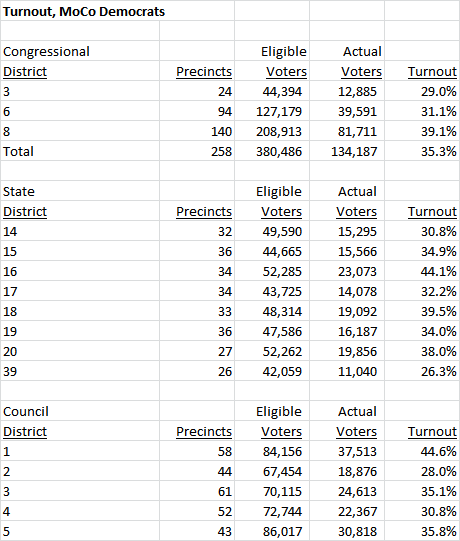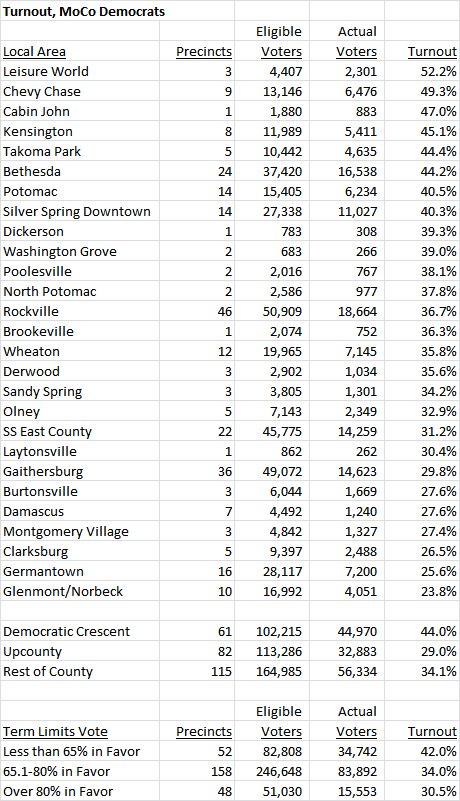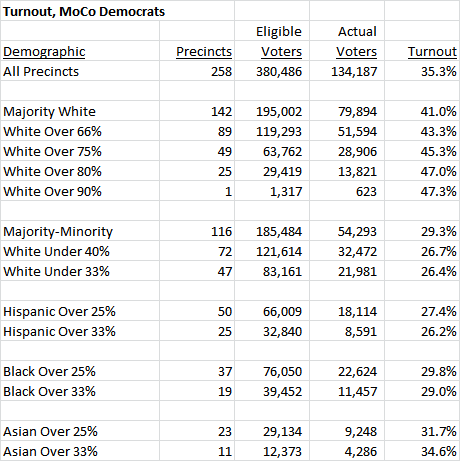By Adam Pagnucco.
In what amounts to an early Christmas for this number cruncher, the State Board of Elections has released precinct voting data for candidate races and ballot questions. We are going to have a lot more of this in coming days, but here is a very quick cut comparing outgoing (yes, outgoing) President Donald Trump with Governor Larry Hogan.
In the 2020 general election, Trump received 19% of the vote in MoCo. In the 2018 general election, Hogan received 44% of the vote in MoCo, probably the highest percentage for a Republican in a MoCo gubernatorial general since Spiro Agnew won the county in 1966.
In comparing the two, there are two caveats. First, the electorate in the 2020 general election (more than 517,000 voters in MoCo) was bigger than the electorate in the 2018 general election (413,137). That means these are different groups of voters, although the Democratic percentage of the electorate in 2020 (64%) is about the same as in 2018 (65%). (The state has not released official turnout numbers yet for 2020, making these numbers approximate.)
Second, 2020 precinct level data includes all voting modes whereas 2018 included election day votes only. Election day votes accounted for 61% of all MoCo votes cast in the 2018 general election, and the Democratic percentage of the electorate (61%) was lower than the Democratic percentage of other voting modes (71%). That skews the 2018 precinct results in Hogan’s favor a bit. Hogan won 47% of MoCo’s election day votes whereas he won 44% of MoCo’s general election votes overall.
All of the above said, the chart below shows Trump’s vote percentage by MoCo town in the 2020 general election.
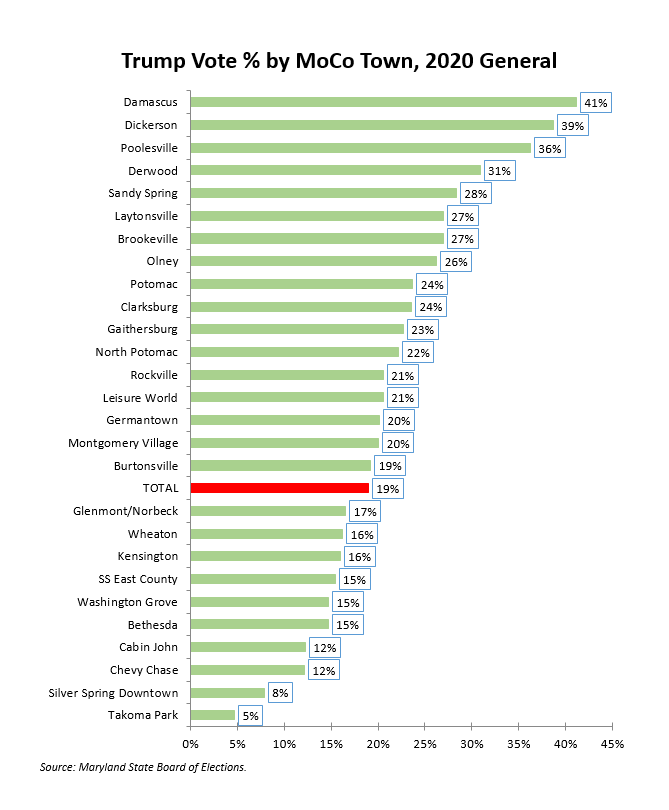
These results are predictable. Trump only won one precinct out of MoCo’s 258 precincts: 12-1 in Damascus, where he tallied 962 votes vs Joe Biden’s 926. Trump did particularly badly in the Democratic Crescent, pulling in the teens and single digits there.
The chart below shows Hogan’s election day vote percentage by MoCo town in the 2018 general election.
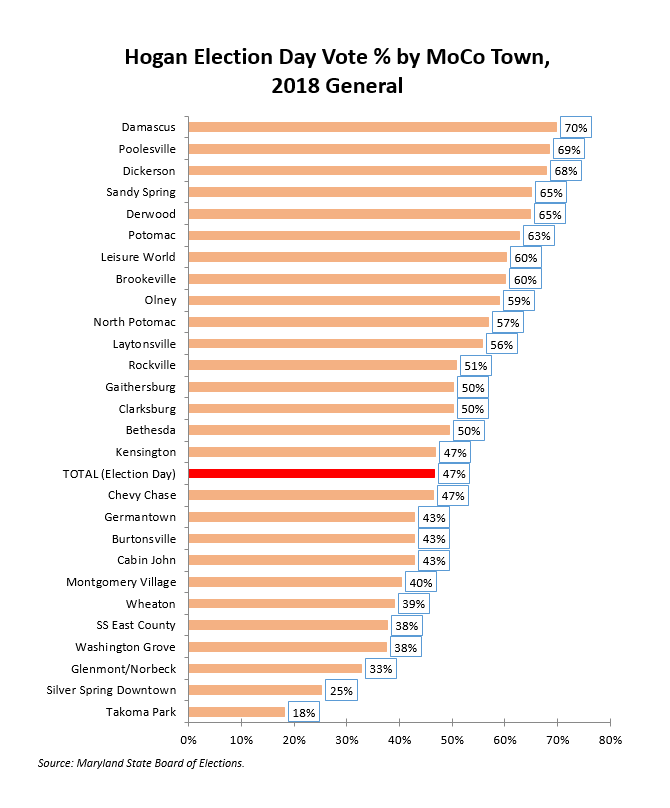
In terms of election day votes only, Hogan won many areas in MoCo. Even if other voting modes were included, Hogan probably won in Brookeville, Damascus, Derwood, Dickerson, Laytonsville, Leisure World, North Potomac, Olney, Poolesville, Potomac and Sandy Spring. Hogan’s overall loss in MoCo was due to lopsided defeats in Silver Spring and Takoma Park, not to geographically broad unpopularity.
This goes to show that a fiscally conservative, socially agnostic and politically strategic Republican can get a lot of votes here, especially in upcounty. But Trumpism is a huge loser in MoCo.

